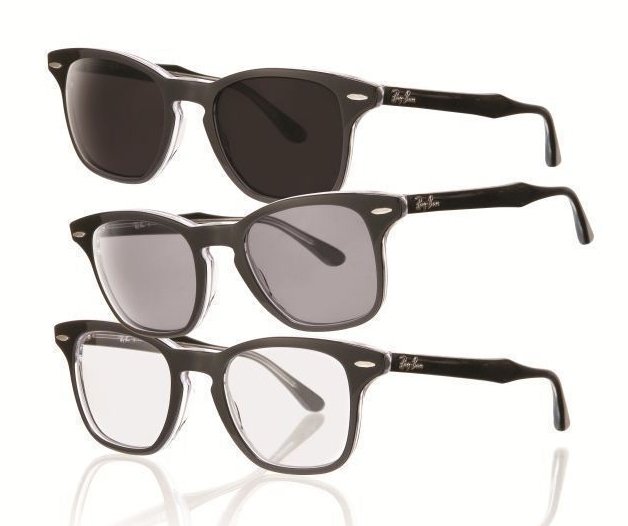Transition lenses, also known as photochromic lenses, have steadily gained popularity over the years due to their convenience and functionality. However, a pressing question continues to linger in the minds of many consumers: Do transition lenses wear out? This article delves into the longevity of transition lenses, exploring factors that contribute to their durability, signs of wear, and how to maximize their life span.
Understanding Transition Lenses
Before unraveling the complexities surrounding their durability, it’s crucial to understand what transition lenses are and how they function. Designed to adapt to varying light conditions, these lenses darken in bright sunlight and revert to a clear state indoors. This adaptive capability stems from a chemical reaction triggered by UV rays, allowing the lenses to provide optimal comfort and visual clarity in diverse environments.
The Lifespan of Transition Lenses
Transition lenses are built to last, but they aren’t immortal. Generally, you can expect them to provide reliable service for about 2 to 3 years, depending on several intrinsic and extrinsic factors. Notably, the materials used in manufacturing, exposure to environmental elements, and the frequency of use can significantly impact their lifespan.
Factors Affecting Longevity
The longevity of transition lenses can be influenced by:
- Material Quality: Transition lenses are typically made from polycarbonate or high-index plastic. Polycarbonate lenses are more impact-resistant, making them suitable for active lifestyles. Conversely, higher-index lenses offer thinner profiles but can be less durable, affecting longevity.
- UV Exposure: The frequency and intensity of UV exposure can compromise the effectiveness of photochromic technology. Regular exposure to sunlight can enhance the chemical reaction, but overexposure can lead to diminished performance over time.
- Care Practices: Proper maintenance significantly extends the life of any eyewear. Using appropriate cleaning solutions, avoiding harsh chemicals, and storing glasses in a protective case can mitigate wear and tear.
- Usage Patterns: Daily wearers may experience more wear than those who only use their glasses intermittently. Frequent and extreme temperature fluctuations, such as wearing glasses in a sauna or during a frigid winter day, can contribute to lens degradation.
Signs That Transition Lenses Are Wearing Out
Recognizing the signs that your transition lenses may be losing their effectiveness is essential for maintaining optimal vision. Here are some indicators to watch out for:
- Inconsistent Darkening: If you notice your lenses fail to darken satisfactorily in bright light conditions, it could signify that the chemical reaction isn’t functioning as intended.
- Sluggish Reversion to Clarity: Transition lenses should revert to their clear state quickly when returning indoors. A sluggish reaction could indicate wear and necessitates a closer examination.
- Scratches or Distortions: Scratches on the surface of the lenses not only impair vision but can also contribute to increased glare and discomfort. A scratched lens will significantly affect the overall performance of the transition feature.
- Increased Discomfort: If the lenses no longer feel comfortable or provide the visual clarity you once experienced, it may be time for an evaluation.
Maximizing the Lifespan of Transition Lenses
While transition lenses are durable, implementing practices to maximize their longevity is essential. Here are several tips to preserve your eyewear:
- Regular Cleaning: Use a gentle solution and microfiber cloth to clean the lenses. Avoid ammonia-based cleaners, as they can hasten the deterioration process.
- Proper Storage: Always store your glasses in a hard case when not in use. This safeguards them from scratches and minimizes the chances of accidental impacts.
- Avoid Extreme Temperatures: Although designed to withstand varying climates, exposing your lenses to extreme heat or cold can lead to structural damage over time.
- Annual Eye Exams: Regular check-ups with an eye care professional ensure that any vision changes are addressed promptly. This also allows for an assessment of the condition of your transition lenses.
When Should You Replace Transition Lenses?
So when should you finally consider replacing your lenses? If your transition lenses exhibit any of the signs mentioned earlier and fail to provide satisfactory performance, it might be time for an upgrade. Additionally, evaluate your prescription: if your vision has changed significantly, obtaining a new pair of glasses—with potentially improved photochromic technology—may greatly enhance your visual experience.
The Bottom Line
Transition lenses do wear out over time, influenced by a myriad of factors ranging from material quality to exposure and care practices. Recognizing the signs that your lenses may be deteriorating is crucial for maintaining optimal eyesight. By implementing simple maintenance routines and observing proper usage, you can extend the life of your transition lenses. When the time comes, consider your options for replacement, ensuring you invest in frames and lenses that suit both your vision needs and lifestyle preferences.

